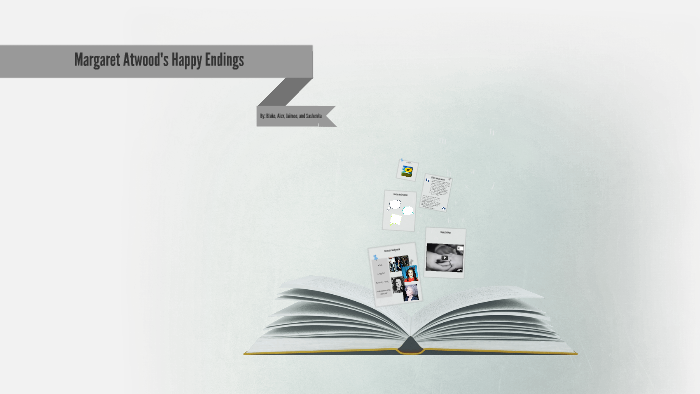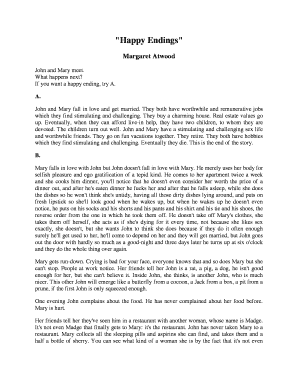

At the same time, she challenges other writers to more closely examine typical literary convention. She defined the artist, in part, as "the guardian of the moral and ethical sense of the community." In "Happy Endings," Atwood fulfills this role with a challenge that she throws out to those writers who rely on the stereotypical characterization of men and women and to the reader who accepts such gender typing. In earlier works, including the novel Bodily Harm, as well as speeches, Atwood discusses the writer's relationship to society. In several thumbnail sketches of different marriages, all of which achieve a traditional "happy ending," Atwood references both the mechanics of writing, most particularly plot, and the effects of gender stereotyping. "Happy Endings," which is essentially a self-referential story framework, falls into the third category. I wish we couldve had a happy ending Reality quotes, Besties quotes. Subtitled "Short Fiction and Prose Poems," Murder in the Dark featured four types of works: autobiographical sketches, travel notes, experimental pieces addressing the nature of writing, and short pieces dealing with typical Atwood themes, notably the relationship between the sexes. Story Review: Happy Endings by Margaret Atwood The Short Story Station. As Flannery O’Connor said, “ just sit back and enjoy the story.Margaret Atwood's "Happy Endings" first appeared in the 1983 Canadian collection, Murder in the Dark, and it was published in 1994 for American audiences in Good Bones and Simple Murders. their conflicts and defeats, the lives celebrated have often been tough, and not all of them have had happy endings. Although even this test has it’s holes because literature for one person is just a nice story for someone else. In this way it is easy to decide what is literature and what is not, if at the end of a story if the reader’s only thought is “Gee, what a nice story” then it is most definitely not literature, but if instead if the thought is more along the lines of “The author said A, B and C but were they really trying to make a point about D?” it is literature. The main theme in most literature that divides it from the rest of the stories is that literature tries to make a specific point, and in doing so forces the reader to think about the point that the author is trying to make. The use of story like this to portray the differences in opinion on what makes a story is pure genius on the part of Atwood, what is even more interesting is the fact that it is also considered literature. The step from story to literature is a gray line and is based on personal taste, as Justice Stewart said “I know it when I see it” although he was referring to obscenity it is just as applicable here. At approximately 1,300 words, it's also an example of flash fiction. That is, it's a story that comments on the conventions of storytelling and draws attention to itself as a story. This is the important part, the hows and the whys are what makes a story literature with out them it makes no difference if the prose is expertly laid out or not it is all still a story nothing more. 'Happy Endings' by Canadian author Margaret Atwood is an example of metafiction.

According to Atwood, all the whats are just the plot, one thing that happens after another, however the how and the whys are what really make a story more than a story. Atwood also says that what happens is not all-important but how it happens and why it happens.

However if someone knows the middle they can guess the ending, if they are told that person “A” had to have triple bypass surgery and that person “B” murdered a few people they can make an educated guess how each story ends.īut even the middle of the story is only part of a greater whole, without the beginning of the story no one can tell why certain events happened and what lead to person “A” to doing “action z”. However if someone dies from heart failure no one can know anything about his life, they may guess the person ate too much junk food, or drank too much but if they don’t know anything else they can’t guess the middle. So since the ending is already known why does it have the tendency to “steal” the spotlight from the rest of the story? Sure in some cases people can guess the middle of a story from the ending, if they find someone died in an electric chair they can assume he committed a crime. This holds true with literature versus a beach novel although a beach novel and piece of literature may end the same way it is the rest of the book that makes one different from the other.Īs she says the true ending is “John and Mary die” the only guarantee in life is death. She seems to say that the endings are all cliché that the middle is the part that is unique. Margaret Atwood uses her short story Happy Endings to show that it is not the end of a story that is important it is the middle.


 0 kommentar(er)
0 kommentar(er)
